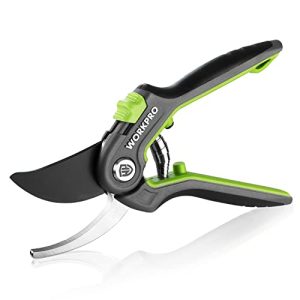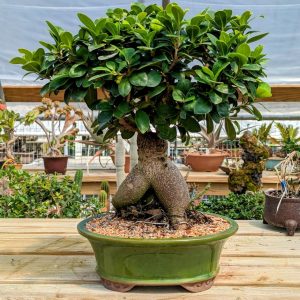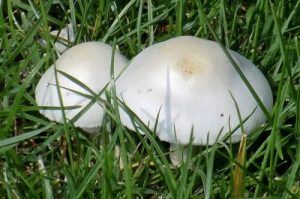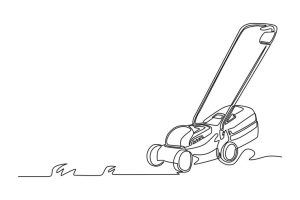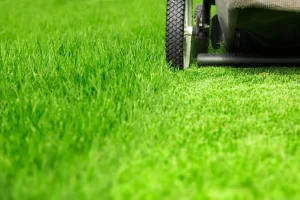Have you ever dreamed of having your own garden oasis, regardless of the season? With a greenhouse, you can turn that dream into reality.
Greenhouses offer a controlled environment that opens up a world of possibilities for you, even if you’re a beginner. Imagine plucking fresh tomatoes or fragrant herbs just steps away from your kitchen. Sounds delightful, right? But what should you grow in your greenhouse to ensure a successful start?
This is where many first-time gardeners find themselves stumped. You might be wondering which plants are easiest to nurture and most rewarding for your efforts. The answers are simpler than you might think. By choosing the right crops, you can maximize your greenhouse’s potential without feeling overwhelmed. In this guide, you’ll discover the best plants for beginners to grow in a greenhouse. Whether you’re looking to enjoy fresh produce, vibrant flowers, or both, you’ll find the tips you need to make your greenhouse garden thrive. Ready to dig in and learn more? Let’s get started!
Benefits Of Greenhouse Gardening
Greenhouse gardening offers beginners a chance to grow tomatoes, lettuce, and herbs with ease. Controlled environments allow for year-round cultivation, protecting plants from harsh weather. This setup ensures better growth and increased yield for novice gardeners.
Greenhouse gardening offers a unique opportunity to grow a variety of plants year-round, regardless of the weather outside. For beginners, it can be an exciting way to explore gardening in a controlled environment. The benefits are numerous, providing both practical and personal rewards.Extended Growing Season
With a greenhouse, you’re not bound by the seasons. Even in winter, you can grow vibrant plants that would otherwise perish in the cold. Imagine enjoying fresh tomatoes or herbs when snow blankets the ground outside.Protection From Pests And Harsh Weather
Greenhouses act as a barrier against common pests and severe weather conditions. Say goodbye to the frustration of losing plants to unexpected frosts or hungry critters. This controlled environment allows your plants to thrive with fewer interruptions.Optimal Growing Conditions
Adjusting temperature, humidity, and light to suit your plants’ needs is a game-changer. You become the weather controller, creating an ideal habitat for growth. This flexibility can lead to healthier plants and more abundant harvests.Increased Plant Variety
The world of plants opens up with a greenhouse. You can grow tropical plants or start seedlings that require a bit more warmth. Have you ever wanted to try your hand at exotic fruits or rare flowers? Now you can.Cost Efficiency
Over time, growing your own produce can be more economical than buying from stores. Plus, you get the satisfaction of knowing exactly how your food was grown. Consider the joy of picking fresh greens for dinner, straight from your backyard.Improved Mental Well-being
Gardening is therapeutic, offering a break from the stresses of daily life. The act of nurturing plants can be calming and rewarding. How often do you take time to connect with nature and enjoy the simple pleasures? The journey of greenhouse gardening can transform not just your garden, but your lifestyle. Embrace the learning process and watch your efforts flourish. What will you grow today?
Credit: www.yahoo.com
Choosing The Right Greenhouse
Starting a greenhouse journey can be exciting for beginners. Easy-to-grow plants include tomatoes, cucumbers, and herbs. These thrive in controlled environments and offer rewarding results.
Choosing the right greenhouse can greatly influence your gardening success. For beginners, understanding the basics is crucial. The right greenhouse offers protection and a controlled environment. It helps in growing plants more efficiently. Let’s explore some essential factors to consider.Types Of Greenhouses
There are various greenhouse types available. Lean-to greenhouses attach to an existing building. They save space and share a wall. Freestanding greenhouses stand alone and provide more space. They offer flexibility in location. Mini greenhouses are compact and ideal for small spaces. They are great for beginners with limited space.Materials And Construction
Greenhouse materials affect durability and insulation. Glass greenhouses offer excellent light transmission. They are durable but can be expensive. Polycarbonate greenhouses are more affordable. They provide good insulation and are lightweight. Plastic film greenhouses are the most economical. They are easy to set up but less durable.Location And Size Considerations
Choose a location with plenty of sunlight. Ensure it is close to a water source. Consider the size based on your gardening goals. A small greenhouse is suitable for beginners. It is easier to manage and maintain. Ensure there is enough space for your plants to grow.Ideal Conditions For Greenhouse Plants
Growing lettuce, tomatoes, and herbs in a greenhouse offers beginners a manageable start. These plants thrive in controlled environments, ensuring steady growth. Ideal conditions include regulated temperature, humidity, and light, which support healthy plant development.
Ideal Conditions for Greenhouse Plants Growing plants in a greenhouse can be a thrilling journey for beginners. However, success heavily depends on creating the right environment for your plants. By mastering temperature, humidity, and lighting, you can provide the ideal conditions for your green friends to thrive.Temperature Control
Temperature is crucial in a greenhouse. Most plants prefer a range between 65°F and 75°F during the day. At night, a slight drop to 55°F to 65°F is usually ideal. To maintain this, you might need a heater for cooler days and ventilation for warmer ones. A simple thermometer can be your best friend in tracking these changes. Think about how you feel on a hot day without a fan or shade. Plants feel the same way! Ensure your greenhouse is equipped to handle temperature fluctuations effectively.Humidity Levels
Humidity is another vital factor. Most greenhouse plants thrive in 50% to 70% humidity levels. Too much or too little can hinder growth or invite pests and diseases. Consider using a hygrometer to monitor humidity. If levels drop, misting can help. Conversely, if it gets too damp, proper ventilation or a dehumidifier can save the day. Have you ever noticed how your skin feels in dry air versus humid air? Plants react similarly, so maintaining the right balance is crucial.Lighting Requirements
Plants need light to photosynthesize, but not all plants require the same amount of light. Leafy greens like lettuce may need less light, while tomatoes may need more. Natural sunlight is ideal, but supplemental grow lights can make a difference on cloudy days or during shorter winter months. Positioning is key—rotate plants to ensure even light exposure. Ever noticed how plants lean towards the light source? This behavior, called phototropism, is a reminder of how essential light is for growth. By focusing on these elements—temperature, humidity, and lighting—you set the stage for a bountiful greenhouse garden. What conditions have you found most challenging to maintain in your greenhouse?Beginner-friendly Vegetables
Starting a greenhouse can be an exciting venture, especially when you’re growing your own vegetables. As a beginner, it’s important to choose vegetables that are easy to manage and rewarding to harvest. Certain vegetables thrive in greenhouse environments and offer a great starting point for novice gardeners. Let’s dive into some beginner-friendly vegetables you should consider for your greenhouse.
Tomatoes
Tomatoes are a staple in many greenhouses due to their adaptability and the delicious reward they offer. They thrive in the warm, controlled environment of a greenhouse. Start with cherry tomatoes, as they are less prone to diseases and ripen faster.
Ensure you provide adequate support for your tomato plants with stakes or cages. Regularly check for pests and keep the soil moist but not waterlogged. Harvesting fresh tomatoes can bring immense satisfaction and enhance your culinary experiences.
Lettuce
Lettuce is a fantastic choice for beginners due to its quick growth cycle and minimal care requirements. It can be harvested multiple times, providing a continuous supply of fresh leaves. Opt for varieties like butterhead or romaine, which are known for their resilience.
Maintain a consistent watering schedule to avoid bitterness in your lettuce. Lettuce does well in slightly cooler temperatures, making it ideal for different seasons. Growing your own lettuce ensures you always have crisp, fresh greens at your fingertips.
Cucumbers
Cucumbers can be a delightful addition to your greenhouse, offering a crunchy, refreshing taste. They are relatively easy to grow, provided they have enough vertical space to climb. Choose bush varieties if you have limited space.
Ensure your cucumbers receive ample sunlight and regular watering to prevent them from becoming bitter. Consider training them on trellises to maximize space and improve air circulation. Imagine the satisfaction of slicing a homegrown cucumber for your salads!
Have you tried any of these vegetables in your greenhouse yet? Each one offers a unique growing experience and a step towards self-sufficiency. Enjoy the journey of nurturing these plants and savor the fruits—or vegetables—of your labor.
Easy Herbs To Grow
Growing herbs in a greenhouse is perfect for beginners. Basil, mint, and chives thrive in controlled conditions. These easy herbs require minimal care and offer fresh flavors year-round.
Growing your own herbs can be a delightful experience, especially for beginners venturing into greenhouse gardening. Herbs are forgiving plants that thrive with minimal care, making them ideal for those just starting out. Whether you’re adding flavor to your cooking or simply enjoying the fresh scent, herbs are a must-have in any greenhouse.Basil
Basil is a favorite among novice gardeners due to its simplicity and rewarding growth. It requires plenty of sunlight, so place your pot in a sunny spot in the greenhouse. Water regularly but avoid getting the leaves wet to prevent fungal diseases. Pinch back the tops to encourage bushier growth and more leaves. Fresh basil can transform a simple pasta dish or homemade pizza into a gourmet meal. Imagine the joy of plucking fresh basil leaves right when you need them!Parsley
Parsley is another easy herb that offers a lot of versatility in the kitchen. It grows well in both pots and garden beds, making it flexible for your greenhouse layout. Ensure it has well-drained soil and ample sunlight for optimal growth. Regularly snip the outer leaves to promote continuous growth. Parsley is not just a garnish; it can enhance the flavor of soups, stews, and salads. How satisfying would it be to reach for your homegrown parsley as the finishing touch on your favorite dish?Chives
Chives are incredibly hardy and can thrive even if you’re not an experienced gardener. They prefer a sunny spot and require only moderate watering. The slender green stalks are perfect for snipping and adding a mild onion flavor to dishes. Chives also attract beneficial insects like bees, which can be a bonus for your greenhouse ecosystem. Picture a sprinkle of fresh chives over your morning omelet, adding a burst of flavor and a touch of elegance. Why not try growing them and see the difference in your culinary creations? These easy-to-grow herbs not only enhance your meals but also offer a sense of achievement as you nurture them from seedling to harvest. Which herb will you plant first in your greenhouse?Low-maintenance Fruits
Growing fruits in a greenhouse can be an exciting venture, especially for beginners. Choosing low-maintenance fruits will ease your journey and provide rewarding results. Greenhouses create a controlled environment, allowing you to cultivate fruits that thrive with minimal fuss. Let’s explore some delightful options that promise a fruitful greenhouse experience.
Strawberries
Strawberries are a fantastic choice for beginners. They require little attention and produce berries in abundance. You can plant them in hanging baskets or containers, making efficient use of space.
Ensure they get plenty of sunlight, and keep the soil moist. Pick ripe strawberries regularly to encourage more fruit production. Imagine plucking fresh strawberries for your breakfast!
Don’t forget to check for pests occasionally. Keeping the greenhouse clean will help prevent any infestation.
Citrus Fruits
Citrus fruits like lemons and oranges can flourish in your greenhouse. They bring a refreshing aroma and vibrant color. You only need to ensure they receive enough sunlight and water.
These fruits grow well in pots, allowing you to move them as needed. The greenhouse protects them from harsh weather, increasing your chances of a successful harvest.
Have you ever thought about sipping homemade lemonade from your greenhouse-grown lemons? It’s a real possibility!
Melons
Melons are surprisingly easy to grow in a greenhouse. They require warmth and light, which your greenhouse provides perfectly. With proper care, you’ll enjoy juicy melons throughout the season.
Train the vines on a trellis or support to save space and promote healthy growth. Keep the soil well-drained to prevent rot.
Harvesting your homegrown melons can be incredibly satisfying. Are you ready to add a sweet touch to your greenhouse?
Flowers For Year-round Bloom
Growing flowers in a greenhouse can be an exciting and rewarding experience for beginners. With the ability to control temperature and humidity, you can enjoy vibrant blooms all year round. But which flowers should you start with? Here’s a guide to three easy-to-grow flowers that will brighten up your greenhouse.
Petunias
Petunias are a fantastic choice for greenhouse beginners. Known for their colorful and varied blooms, they can add a splash of color to any space. They thrive in well-drained soil and need plenty of sunlight, making your greenhouse the perfect home.
Consider planting petunias if you love experimenting with different colors. You can mix and match shades to create a living canvas that evolves throughout the year. Are you ready to transform your greenhouse into a rainbow?
Marigolds
Marigolds are not just beautiful; they are also incredibly hardy and easy to grow. They can withstand varying conditions, which is ideal for those who are new to gardening. Plus, marigolds can help keep pests at bay, making them a practical choice.
Plant marigolds if you’re looking for a flower that offers more than just aesthetic appeal. Their bright, cheerful blooms are sure to lift your spirits, even on cloudy days. Why not start your greenhouse journey with a flower that’s as useful as it is pretty?
Geraniums
Geraniums are beloved for their lush foliage and striking blooms. They are perfect for greenhouse growing because they prefer a steady, warm environment. As a beginner, you’ll appreciate their forgiving nature and low maintenance needs.
Opt for geraniums if you want a reliable flower that delivers consistent beauty. They can be grown in pots or beds, offering flexibility in your greenhouse layout. Could geraniums be the dependable splash of color your greenhouse needs?
Tips For Successful Greenhouse Gardening
Embarking on your greenhouse gardening journey can be incredibly rewarding. With the right guidance, even beginners can cultivate a thriving indoor garden. Here are some essential tips that will help you succeed in your greenhouse endeavors, ensuring your plants flourish and yield a bountiful harvest.
Watering Techniques
Watering your greenhouse plants properly is crucial. Over-watering can lead to root rot, while under-watering can cause wilting. One effective technique is to water deeply but less frequently. This encourages roots to grow deeper, making plants more resilient.
Consider installing a drip irrigation system. It delivers water directly to the root zone, minimizing evaporation and ensuring consistent moisture levels. How do you know if you’re watering correctly? Check the soil by inserting your finger—if it’s dry an inch below the surface, it’s time to water.
Pest Management
Pests can be a persistent issue in greenhouses. Regularly inspecting your plants for signs of pests can prevent infestations from escalating. Sticky traps are a simple and effective tool for monitoring and controlling flying insects.
Introducing beneficial insects, like ladybugs or predatory mites, is a natural way to manage pests. They keep harmful pests in check without the need for chemicals. Have you ever considered this eco-friendly approach? It’s worth a try for a balanced greenhouse ecosystem.
Regular Maintenance
Maintaining a greenhouse is an ongoing task that pays off in the long run. Cleanliness is key; regularly remove dead leaves and debris to prevent mold and pests. Ventilation is another critical aspect. Proper air circulation helps control humidity and temperature, keeping diseases at bay.
Consider creating a schedule for maintenance tasks. Routine checks on the structure, ventilation, and equipment ensure everything runs smoothly. Are you ready to make this commitment? Your plants will thank you with healthy growth and abundant produce.
Common Challenges And Solutions
Starting a greenhouse offers exciting opportunities for beginners. Yet, it also presents several challenges. Understanding these challenges and their solutions can make the process smoother.
Overheating
Overheating is a common problem in greenhouses. Excessive heat can damage plants, leading to wilting or even death. To manage this, ensure proper ventilation. Open windows and doors to allow air circulation. Consider installing shade cloths to reduce direct sunlight. Use fans to help cool down the space. Monitoring temperature regularly helps in taking timely action.
Diseases
Plants in greenhouses are prone to diseases. High humidity and poor air circulation can cause mold and mildew. Keep the greenhouse clean and remove dead leaves. Water plants at their base to avoid wetting the foliage. Ensure good ventilation to reduce humidity levels. Regularly inspect plants for signs of disease. Early detection and treatment can prevent spread.
Space Management
Managing space effectively is crucial in a greenhouse. Overcrowding can lead to poor plant growth and increased disease risk. Plan the layout of plants carefully. Use vertical space by installing shelves or hanging pots. Choose compact plant varieties suited for small spaces. Rotate plants to ensure they all receive adequate light. Regular pruning can help manage plant size.

Credit: www.reddit.com
Seasonal Planting Guide
Embarking on your greenhouse journey can be both exciting and rewarding. A well-planned seasonal planting guide will ensure that your greenhouse flourishes all year round. By understanding what to plant and when, you can maximize your yields and enjoy a variety of fresh produce.
Spring Planting
Spring is the season of growth and renewal. In your greenhouse, this is the perfect time to start sowing seeds for plants that thrive in cooler weather. Consider planting leafy greens like lettuce and spinach.
These greens grow quickly and can be harvested in just a few weeks. You might also try your hand at herbs such as cilantro and parsley, which add fresh flavors to your dishes.
Don’t forget about radishes and carrots. These root vegetables are easy to grow and can be a fun project for beginners. They mature quickly, allowing you to enjoy a fast and tasty harvest.
Summer Growth
As the temperatures rise, your greenhouse becomes a haven for heat-loving plants. Tomatoes and peppers are summer staples that thrive in the warm, controlled environment of a greenhouse.
These plants not only provide vibrant colors but also a multitude of culinary possibilities. Cucumbers and zucchini are also excellent choices, offering abundant growth and a refreshing taste.
Have you ever tried growing melons? They’re a bit more challenging but can be highly rewarding. Their sweet and juicy fruits are well worth the effort, and your friends will be impressed by your gardening skills.
Fall Harvest
With the arrival of fall, it’s time to shift focus to hardy vegetables that can withstand cooler temperatures. Think about planting broccoli, cabbage, and kale.
These vegetables are packed with nutrients and can be harvested well into the colder months. They’re also relatively easy to care for, making them ideal for beginners.
Consider adding some root vegetables like beets and turnips to your repertoire. They store well and provide a hearty addition to your autumn meals. By planning your fall harvest carefully, you can enjoy fresh produce even as the days grow shorter.
What new plants will you try in your greenhouse this season? With a little planning and experimentation, you’ll soon discover the joys of year-round gardening.
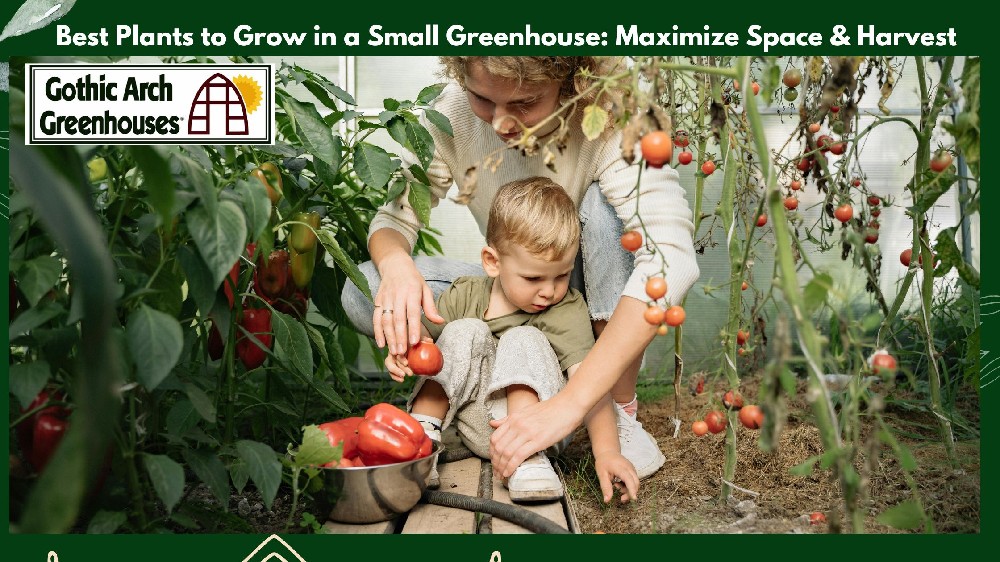
Credit: gothicarchgreenhouses.com
Frequently Asked Questions
What Is The Easiest Thing To Grow In A Greenhouse?
Herbs like basil, mint, and cilantro are easiest to grow in a greenhouse. They thrive in controlled environments and need minimal care. Greenhouses offer ideal conditions for consistent growth and protection from pests. These herbs are perfect for beginners and provide quick harvests.
What Should You Not Grow In A Greenhouse?
Avoid growing plants that prefer cooler temperatures in a greenhouse. These include spinach, lettuce, and peas. They can bolt or wilt in warm, humid conditions. Certain root vegetables like carrots and potatoes also thrive better outdoors due to their need for space and consistent soil conditions.
When To Start Growing In A Greenhouse?
Begin planting in a greenhouse after the last frost, typically in early spring. Ensure the temperature is consistently warm. Use heaters if necessary to maintain optimal conditions. Monitor humidity levels closely for healthy plant growth. Ideal timing can vary based on location and greenhouse type, so adjust accordingly.
What Is The Most Profitable Thing To Grow In A Greenhouse?
Herbs like basil and cilantro are highly profitable in greenhouses. They grow quickly and have high market demand. Exotic fruits such as strawberries and tomatoes also yield good profits. Flowers like orchids and roses offer high returns due to their popularity and long blooming season.
Conclusion
Greenhouse gardening offers a great start for beginners. You can grow herbs, vegetables, and flowers. Easy choices like lettuce, tomatoes, and basil thrive well. Their care is simple, making them perfect for new gardeners. Observing plant growth is exciting. Plus, you enjoy fresh produce at home.
Start small and learn as you go. Over time, you’ll gain confidence and skill. Greenhouses provide a controlled environment. This makes gardening less challenging. Remember, every gardener learns by doing. Enjoy your journey into greenhouse gardening. It’s rewarding and fun!


